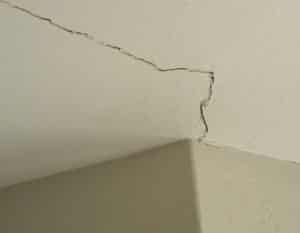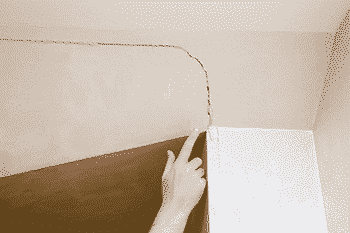Ceiling Cracks: Superficial or Super Worrisome?
If you have noticed cracks in your ceiling, it may be a sign of foundation problems. However, some cracks are normal and not a cause for concern. Knowing the difference in ceiling cracks can reduce your stress and help save your home from structural damage.
If you have cracks in your ceiling, it's important to determine whether or not they are a cause for concern. Some cracks are simply the result of normal settlement and are not indicative of any underlying problems. However, other types of cracks can be a sign of more serious issues, such as foundation problems.
Foundation problems can occur for a variety of reasons, ranging from improper construction to changes in the soil that supports the foundation. If you're unsure whether or not your ceiling cracks are cause for concern, it's always best to consult with a professional.

How to Know if Ceiling Cracks are A Serious Problem
Cracks in your ceiling can be unsightly, but they may also be a sign of a serious problem. If the cracks are large or numerous, it could be a sign that your ceiling is structurally unsound. By taking action quickly, you can help to ensure that your ceiling remains safe and sound.
Where are the ceiling cracks located?
If you discover a crack along the edges of the ceiling, it is likely due to natural house settlement that has occurred over time. However, if you notice wide, long horizontal cracks across your ceiling or multiple cracks, this could be a sign of more serious structural damage. In order to address any potential issues an inspection should be conducted by an experienced professional.
Are your ceilings bowed?
If you notice a bow in your ceiling along with visible signs of cracking, that is a sign of a large problem. The joints in a home can only support a certain amount of weight. Once that weight is surpassed, the support weakens, the ceiling sags, and before you know it the ceiling collapses.
How to Fix Ceiling Cracks
Firstly, the best thing to do if you find ceiling cracks is to schedule a free inspection with a reliable contractor. The contractor will check the crack to determine its severity and what steps may need to be taken. In fact, many times a crack is nothing to worry about. Either way, our contractors offer free inspections to make the most out of your time. Ultimately, Contacting My Foundation Repairs and talking with a contractor is the way to go. Learning more about ceiling cracks and what they mean for your foundation is important to finding solutions that work.

Types of Ceiling Cracks
It is important to be able to identify different types of ceiling cracks in order to determine the cause and take appropriate action. Each type has its own unique characteristics, and some may be more serious than others.
Fine, Straight Ceiling Cracks
These cracks can be caused when a drywall joint wasn’t properly taped or mudded. The tape may not be sticking to the drywall and so a “crack” appears where the edge of the tape is. You can either ignore this or apply a small bit of drywall compound to the loose tape and stick it back on.
Discolored Crack
If the ceiling crack is yellow or brown, it is most likely caused by a water leak. Once the leak is repaired, you can re-tape the drywall, making it look like new again. If the drywall is swollen or soft, you will want to replace the section.
Small Spiderweb Cracks
A thinned drywall compound is used to make a textured ceiling. However, if the compound was applied too thickly, it can crack in all directions. You can cover the cracks with a layer of thin drywall compound. You can also sand off the old compound and reapply it.
Horizontal Crack Between the Ceiling and Wall
This may be caused by something called “truss uplift.” The trusses holding up your roof are designed to move a little bit to absorb changes caused by temperature and humidity. The truss may move upward, lifting the ceiling with it. It’s not going to cause any structural problems, but if you want to repair it, you will probably want to hire a professional.
Ceiling Cracks in Plaster Ceilings
If you live in a home with plaster ceilings and you begin to see cracks, they may be caused by moisture and/or movement. Small cracks can be repaired by applying plaster. If they are bigger and sections of plaster are falling, you will probably have to remove the plaster and replace it with a drywall section.
Large Cracks In a Bowed Ceiling
If your ceiling is sagging, you need to have the problem addressed. If something heavy is above the ceiling, the ceiling can sag. You will need to move the heavy object. Other causes may be the removal of a load-bearing wall or damage to the support structure. This type of issue will require an inspection by a structural engineer or contractor. This is a situation that needs to be repaired quickly before it gets worse.
